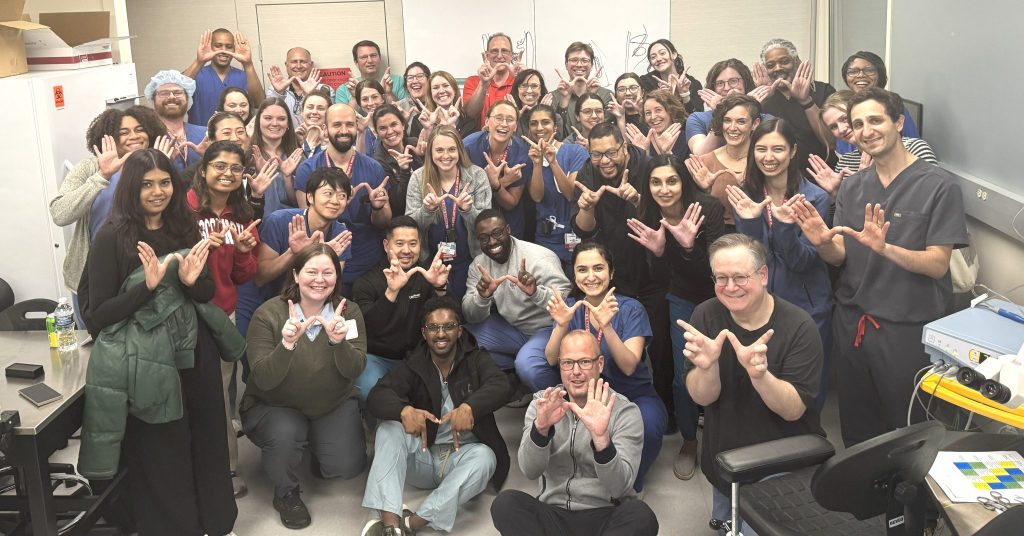
By Katie Newcomb, GHI Communications Director…Dr. Seth Dailey believes in The Wisconsin Idea, sharing innovations to improve health, inclusion, and the power of homemade chili to bring a community together.
For the last 21 years, Dr. Dailey has made UW–Madison his home. As chief of the Division of Laryngology, and director of the Laryngology Fellowship Program, he is a sought-after expert in voice, airway, and swallowing disorders. His research focuses on vocal surgical reconstruction, office-based procedures, and he has more than 24 years of research experience training residents and fellows.
Throughout that time, his constant drive to learn and share ideas to improve the lives of people with laryngeal conditions has propelled his innovation.
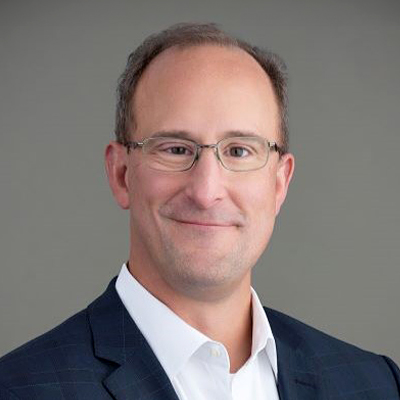
As Dr. Dailey explained, “Hundreds of years ago, when doctors were trying to understand how the human body worked, they looked to cadavers to study anatomy-because anatomy is a fundamental part of learning. You can see it depicted in various historical paintings. In our field, about 70 years ago, people who did ear surgery, otologists, recognized the ear is full of important structures, like the hearing apparatus, balance apparatus, and the facial nerve. And these otologists, when having to perform surgery, wanted to do it safer, better, faster, and more intelligently. So, they started using cadaveric temporal bones to practice surgery in a lab to have a better understanding of the anatomy and where the facial nerve, cochlea, semi-circular canals, and more are. This is one form of surgical simulation.”
(photo: Dr. Seth Dailey, courtesy Laryngeal Dissection Course)
Seeing an opportunity to improve simulation techniques for the larynx, in 2001, Dr. Dailey, along with a research colleague, Dr. James Kobler, PhD, at Harvard Medical School in Boston, developed a physical station to practice laryngeal surgery. The station was designed for cadaveric larynges to simulate endoscopic and open laryngeal surgery as a way to hone the craft without any risk to an actual patient. Dr. Dailey was also inspired and guided by his fellowship director, Dr. Steven Zeitels. All this was done with the goal to help patients with voice box-related damage and injuries.
(photo: Dr. James Kobler, courtesy Dr. Dailey)
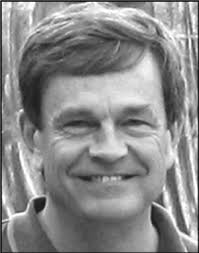

After trial and error, including a messy experiment with a Styrofoam cooler, the two created the first laryngeal station out of plywood, steel rods, brass rings, and test tube clamps. This innovation, like many other world-changing catalytic-thinking ideas, was created in a garage – proving ideas and innovation can begin anywhere. “This was kind of garage-band, but it was a start to get us thinking of courses and pathways for laryngeal education,” said Dr. Daily.
(photo: First laryngeal station, courtesy Dr. Dailey)
Since then, the form has gone through several upgrades and the fourth iteration is used to teach laryngeal techniques in the UW–Madison Laryngeal Dissection Course in the Department of Otolaryngology-Head and Neck Surgery at the University of Wisconsin School of Medicine and Public Health. Dr. Dailey embraced a team approach to redesign the fourth-generation station by working with an undergraduate with engineering expertise, Zach Bromet, and an MD, PhD Otolaryngologist from Japan, Dr. Yuki Tanigami, who was working as a visiting scientist.
To complement the form, the textbook Dr. Dailey edited, Laryngeal Dissection and Surgery Guide, is used. Plus, in true Wisconsin Idea fashion, the course also shares how to create your own form, including links to find materials for approximately $200. This is being done to ensure those taking the class virtually can set up their own station, wherever they are, at a reasonable cost. A video showing how to put the pieces together will be available on their website soon. “We did this to serve the world. We want laryngeal surgery to be available for everyone,” Dr Dailey shared.
With a goal of serving learners from well beyond Wisconsin, last year, more than 1,000 participants from 48 countries took the course, including from as far away as Azerbaijan. Dr. Dailey has been contacted by training facilities in several countries interested in replicating this course, further highlighting how this comprehensive program exemplifies the Wisconsin Idea in Global Action, showing the impact of sharing knowledge for improved community health outcomes.
(photo courtesy Laryngeal Dissection Course)
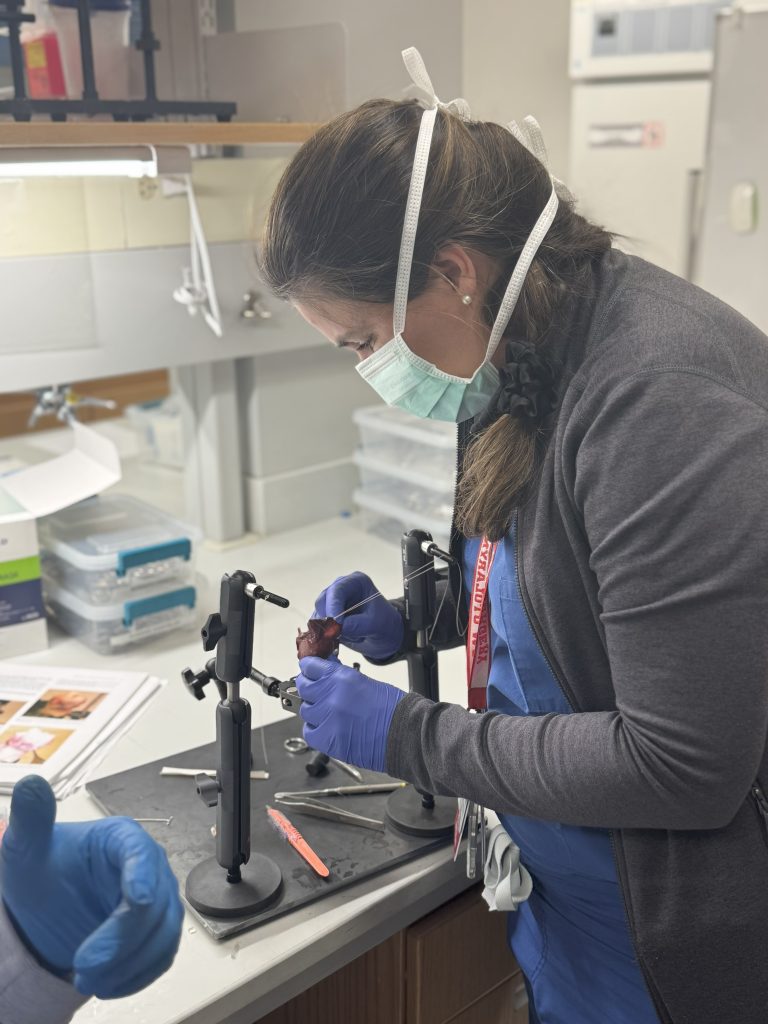
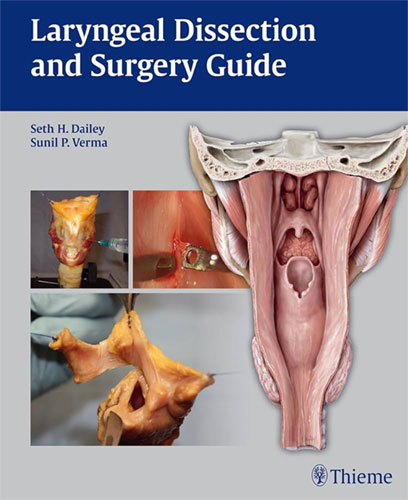
The Laryngeal Dissection and Surgery Guide was published in 2011, after Dr. Dailey and Dr. Sunil P. Verma, UW–Madison’s first laryngology fellow, reached out to expert colleagues to create 33 chapters reflecting specific procedures.
Each procedure is illustrated with the laryngeal dissection station and cadaveric larynges to help visualize surgical techniques. It was put together in parallel to what already existed in the otology world and is currently the only laryngeal surgery simulation textbook of its kind.
“The unification of putting physical components with a book to follow is unique. We’re putting our stake in the ground and reasserting laryngology as a specialty and inviting others to join us,” Dr. Dailey said.
(photo courtesy Laryngeal Dissection Course)
There was a time when laryngology wasn’t seen as a specialty. That changed over time with more science, practice, fellowship offerings, and collaborations with scientists, surgeons, and speech pathologists. And through those exchanges, it became clear this field of study was a specialty that needed further exploration. Dr. Dailey explains, “What we’ve done isn’t revolutionary. It’s evolutionary. It’s putting into practice dissemination and implementation to get at innovation.”
The course is now in its 17th year and will be offered on May 15, 2026, at the University Hospital Simulation Center at UW–Madison. The day-long course includes two sessions: six virtual masterclasses with Q&A in the morning, and hands-on, in-person training in the afternoon. The masterclasses include a variety of surgical techniques shared from experts around the globe, including Microflap – Start to Finish, Emergency Tracheotomy, Internal Branch of Superior Laryngeal Nerve Injections for Chronic Cough and Sensory Disturbance, Angiolytic Laser Use in the Office for Benign Vocal Fold Lesions, Pediatric Supraglottoplasty, and Tracheal Shave in the Office.
(photo courtesy Laryngeal Dissection Course)
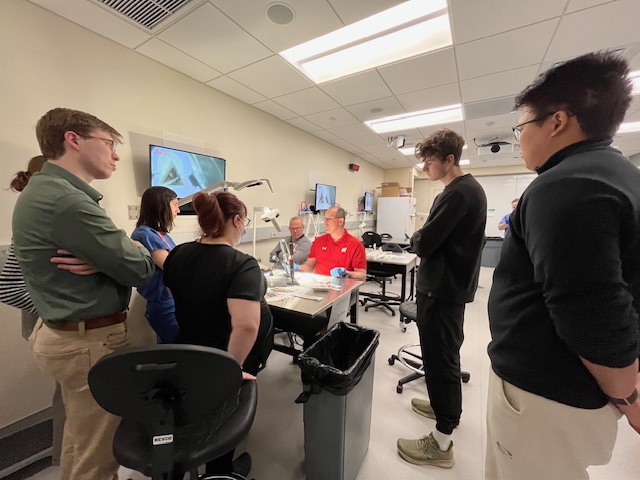
The course is primarily geared for anyone involved with laryngeal surgery. This includes faculty, residents, and practitioners. But it is also open to anyone who is involved in the care or science of someone who has experienced, or is going to experience, a laryngeal surgery. Past participants have included voice scientists, speech-language pathologists, medical students, undergrads, and even members from the engineering school – making this a true interdisciplinary educational experience.
Inclusion is central to Dr. Dailey’s approach to this course. In the early years, Dr. Dailey invited course participants and field experts to his home for chili and conversation to build community. The event became so popular that the tradition has grown to include three types of homemade chili —all meant to inspire conversation and foster community.

“My vision for this has been to have a big tent,” Dr. Dailey shares. “A tent is a big, wide open space where people can join together – where there is an easy in and out. It’s a gathering place for folks to interact. It’s inclusive. It’s open. And this course is designed to provoke thought, design, and innovation to benefit group sharing under one mission. Anyone can attend this course who has an interest and interact. There are no restrictions.”
(photo courtesy Laryngeal Dissection Course)
For more information on the Laryngeal Dissection Course, please visit their website, or reach out to Dr. Dailey at shdailey@wisc.edu.
